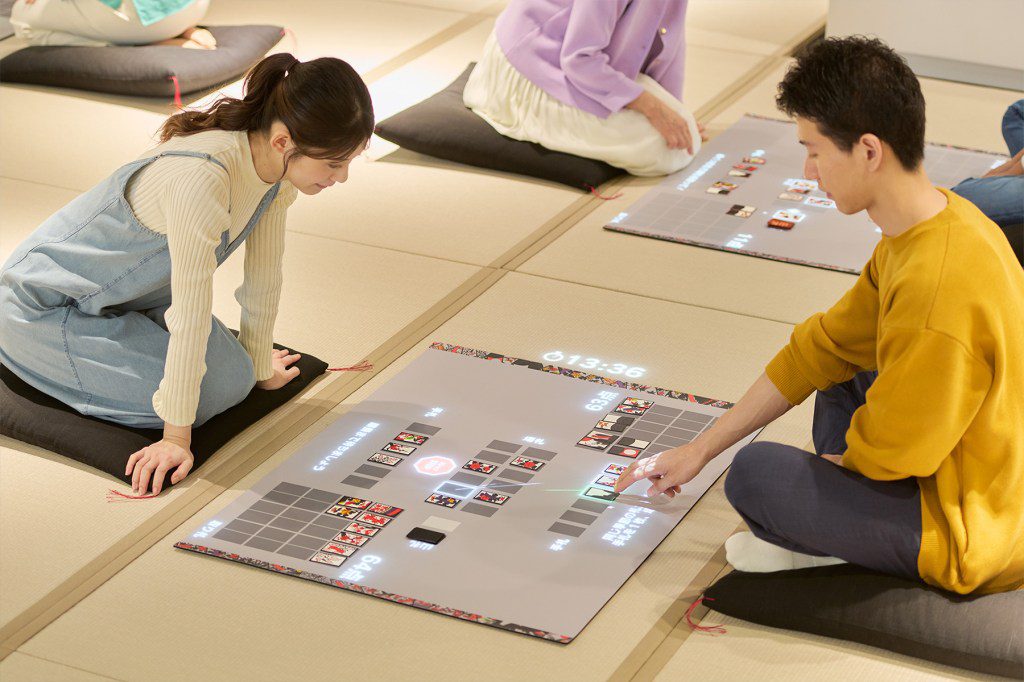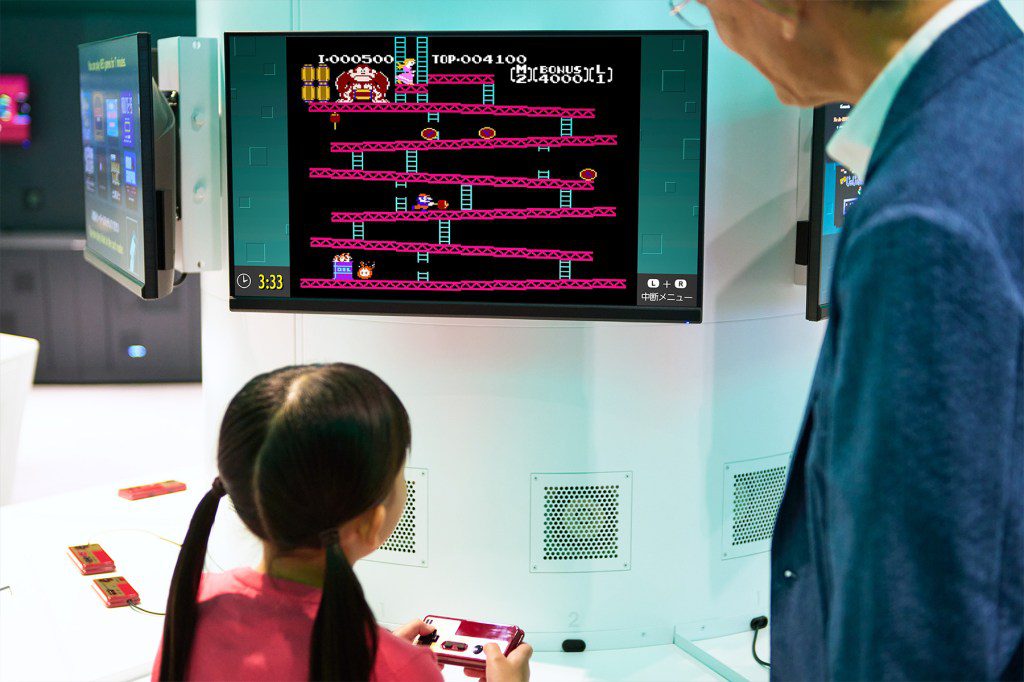Nintendo’s New Museum Invites You to Worship Your Own Memories
For being one of the most influential cultural forces in the history of gaming, it’s kind of a thing for people to shit on Nintendo. Its current console, the Switch, is home to some of the greatest games ever made, but in its seventh year on the market it’s looking a bit long in the tooth, without meaningful releases for nearly a year while its successor lurks in the shadows. And while the company opts to play coy about the basic existence of a Switch 2, it’s spent much of its time focusing on theme parks and movies, seemingly committed to beating Disney at its own game. But everyone knows that Nintendo is going to do things their way, however confusing it may be.
So, when Nintendo recently announced the opening of a new museum in Kyoto, Japan, it’s fair to say it was met with some skepticism. After all, there’s already tons of Nintendo museums. Its stores in New York City and Kyoto are shoppable galleries of their entire history, and feature display cases with many of its oldest consoles, characters, and armies of Amiibo figurines. Most of its games and digital storefronts are host to timelines and explainers that detail everything about their various IP. Through waves of re-releases and retro gaming apps, we’re always being reminded of everything the company has done.
And yet, given their knack for reinvention, it would be foolish to doubt that when Nintendo says they’re going to open something as mundane as a museum, that there wouldn’t be some deeper twist. Recently, Rolling Stone was invited to attend a preview of the facility before its official opening on Oct. 2. Over the two-day tour, we were able to see every exhibit and interactive experience, as well as listen to Mario creator Shigeru Miyamoto speak about the intent of the endeavor.
What we found was a museum that’s less about Nintendo’s history, it’s a museum of your history with Nintendo, as told through the games you know.
Tucked away in an unassuming corner of Kyoto’s Uji City, the Nintendo Museum is just a short subway ride from Kyoto’s Central Station, which is accessible by bullet train from Tokyo. (This was the itinerary that Nintendo suggested, and paid for, to preview it alongside a handful of other publications.) At first glance, the building looks like nothing special, a two-story gray monolith with discernable features other than the Nintendo logo on its façade. The building’s plainness makes sense once you learn that it used to be the Uji Plant, a factory constructed in 1969 to make toys and playing cards for Nintendo. Now, it remains stoic, hiding any sign of its new, colorful inner workings.
The a rendering of the entry plaza’s shows that secrets are visible from high up.
Courtesy of Nintendo
Upon passing through security, guests are met with the first indication of anything playful, with a trio of green pipes and levitating bricks adorned with an item block (called a “hatenda”) and a single mushroom. But anyone expecting Disney World levels of garishness will be surprised — there’s almost nothing on display. Further ahead, the outdoor floor resembles individual pixels, altogether making the entire plaza one large mushroom mural beneath your feet, only fully visible from the sky. It’s here that the subtle nature of the museum reveals itself. It’s a giant easter egg farm.
Inside the smaller of two buildings is the dining hall, a Mario-themed joint called Hatena Burger. The menu is small but allows guests to build their own conceptual burgers from a huge list of ingredients like black charcoal buns, wasabi garlic soy sauce, and of course, deep fried mushrooms. We eat there later in the day; the food is serviceable. Upstairs, there are two hands-on experiences centering on hanafuda cards, which were Nintendo’s main product from its founding in 1889 through the 1960s. Here, guests are invited to make their own set.
In a fun but embarrassing half-hour session, a bunch of adults squinting to color in cards with stencils and ink brushes, getting glue all over ours hands as our patient chaperones provide gentle encouragement and positive reinforcement. The lesson is one of the few aspects of the museum with real hand holding, which is otherwise an almost exclusively self-guided experience. There are no children in attendance on this day, but it makes the grown ups feel like kids.

The tracking and projection tech used in Koi-Koi is a revolutionary teaching aid.
Courtesy of Nintendo
The other attraction in the building, a dojo-like room with kneeling cushions and mats laid out to play the game Koi-Koi with actual hanafuda cards. But there’s no teachers for the lesson. Instead, above each mat is a digital projector, which beams step-by-step instructions down to the game area between the players. The technology is a sci-fi twist — astounding and shockingly intuitive. Reading each card and highlighting the next move to make, it perfectly recreates the feeling of a video game tutorial in the flesh. In 30 seconds, most pick up a game none of us had previously known. The technology may be proprietary — Nintendo representatives on site weren’t able to say — but it feels like a revolutionary way of teaching card games using the methods previously mastered in video games.
In the main building, the interior is massive, yet hollow and bland, resembling a megachurch. Ahead, five statues of Toads stand knee high, smiling psychopathically. To the left is the only wall décor, a hand-drawn illustration of Mario by the church’s God himself, Shigeru Miyamoto. Eerily backlit, it serves as the only welcome message needed.
Guests are encouraged to touch the Toads. “You can get rough with them,” a representative says. Slapping each of their bobbing heads, the Toads begin to shout, then harmonize. Their chants reinforce the almost religious nature of this space.
The final room of the first floor houses two LED walls, draped in mesh curtains. The nondescript images behind them resemble the logos of various Nintendo consoles, but they’re shrouded. Only their original sound effects echo periodically. It feels like a human-sacrifice ritual is about to begin.

The choir of Toads harmonize when you slap their heads.
Christopher Cruz
Up a dark escalator, the walls are illuminated with pixelated blocks, creating a tunnel effect to the level above. Emerging into the center of the main gallery, curved glass cases encircle the arrival port. It’s the big reveal moment from a video game come to life. At first, it’s hard to know where to go. The circular gallery has two rows of display cases, each dedicated to a different generation of Nintendo console: from NES and Game Boy all the way through the Switch. Eventually, you can see the chronological path, but it’s likely that guests will notice their favorite generation and be drawn that way. According to Miyamoto, the absence of a clear path is by design.
“I think we were able to create a space where three generations of families can visit,” he says in a closed-door briefing, “and each generation, each person can have their own space that they have fond memories of that they want to visit.”
The front of the cases shows box art for all the biggest releases, alongside every version of the console from across the globe, some fully dissected like technological cadavers. Overhead, monitors display Japanese-only advertisements and clips from various games with special audio that sends targeted sound waves to whoever’s standing directly in front of them. Titling your head slightly, you can hear next to nothing. Standing a few feet back at display cases for each hardware, the audio also bounces off the glass directly to guests and connects the dots between the device they’re viewing and the sound effects from the high-mounted screens.
The rear of each case breaks down the specific thematic intention and ethos that went into designing each console, from its technological innovations to its core philosophies like “connect” and “share.” You can see how certain innovations were refined or carried over, and where course corrections and new ideas came into play. Everything is treated equally, with even consoles considered failures like 1995’s Virtual Boy and 2013’s Wii U given even billing with the greats.

With minimal text, display cases are meant to elicit emotional more than inform.
Courtesy of Nintendo
But Nintendo is in on the joke at least a little bit, like with the fact that its single Hollywood reference is a DVD copy of 1993’s abysmal Super Mario Bros. movie tucked away in the smallest corner in the farthest edge of the room.
It’s quickly apparent that there’s one glaring omission in this museum — there’s barely any text, at least not in the way you’d expect from an educational journey through Nintendo history. Each case has some data — like game titles and year of release, as well as vague wording about what each console’s spirit was about — but that’s it. There’s no placards with paragraphs of backstory. It’s bizarre — guides don’t even provide much info unless prodded. It’s a visual showcase where you’re mostly left to google what’s going on.
Over time, as the curiosities stack up from 1890s-era playing cards and Mad Men-style magazine ads, the pull gets stronger. People begin drifting to certain games or consoles, staring intently at a wall of idolatry. It’s strangely emotional to find your favorite one from childhood and have memories rush back. It’s a rare museum where the guests are likely to have a deep personal connection to the displays rather than just admiring them. Per Miyamoto, it was essential to have a more hands-off experience without guides, in ways that reflect gaming itself.

Gamers of every generation are meant to build their own experiences and takeaways.
Courtesy of Nintendo
“When we’re developing games, we do things like monitor tests where we have outside people come and play it,” Miyamoto says. “When we do that, I make sure I don’t participate. Because if I were to participate, I would want to go and be like, ‘Oh no, here’s how you do it. You’re not having fun; this is how you make it fun.’ In the end, when the consumer purchases the product and takes it home, I cannot go home with them. The only connection, the only communication that the consumer will have is through the product.”
Miyamoto says that creating a museum that celebrates itself is “very un-Nintendo like,” and jokes that they probably shouldn’t do it. Why painstakingly explain what Nintendo is when you already know what it means to you? It’s heady stuff, and more in line with an art exhibition than anything else.
Downstairs, the artsy vibes give way to a carnival. Here, different versions of Nintendo gaming peripherals like 1966’s Ultra Hand toy grabber and the NES Zapper popularized by 1984’s Duck Hunt take on immersive transformations as mega sized hands-on experiences. The Ultra Hand game is an extremely difficult county fair-type game where you have to physically squeeze and grab Poké Balls and more with suction cups off a conveyor belt. The Zapper is part of a 13-person shooting gallery with an IMAX-sized screen that assaults the senses. There’s even a batting cage with rooms set inside of old living rooms that force you to hit balls into the furniture for points. In the end, guests are required to sweep up their own loose balls. Very Japanese.

Carnival-esque games bring a kooky energy to the museum.
Courtesy of Nintendo
One of the most hyped attractions here is a room where attendees can play classic games across generations like NES’ Super Mario Bros. and Nintendo 64’s Super Mario 64 with a twist: the controllers are the size of a small car, requiring two people to fully control. The games play exactly as you remember them, except with the added difficulty of using a controller that’s been blown up by a super mushroom.
Speaking on the premise of the immersive aspects, Miyamoto decries his issues with dusty old museums.
“When you think about a museum, things don’t move. You don’t touch [them], and sometimes [things] can’t even move because they’re old. I think, ‘Where’s the value in that?’”
The immersive experiences are effective at eliciting glee after touring the upstairs showroom. Tickling the nostalgic part of the brain before dropping people into supersized, dreamlike takes on beloved games is obvious, but potent. The only issue is that each game costs coins, of which guests will only have 10 per visit. Most activations cost two coins, but some like the shooting gallery cost up to four, meaning that the most things anyone could play in a day caps out at five. Not only that, but the ability to even purchase a day pass is dependent on winning a lottery drawing. Imagine flying all the way to Japan to go to an exhibit with a ticket that you narrowly got access to by chance, only to be limited to a fraction of what you can do.

The shooting gallery is a 13-person free-for-all that only lasts a few short minutes.
Courtesy of Nintendo
As attendees of a preview event, we were able to touch and play with everything in a mostly empty space, but that’s not the experience most people will have when doors open. It’s unclear if the gatekeeping is intended to reduce the wait times that plague theme parks like Universal Studios’ Super Nintendo World, or just to push players to be selective about curating their experiences — maybe it’s both. But regardless, it feels like the kind of arbitrary limitations that Nintendo is known to place on consumers routinely through their own hardware and software decision making. After all, this is a company that loves to resell you the same 30-plus year-old games time and again while kneecapping backward capability with new consoles. Maybe they want you to come back, but that requires re-entering the lottery.
Even the gift shop feels limited, mostly featuring exclusive merchandise only available at the museum — much of which centers around the individual consoles or the exhibit itself. The waiting room walls are lined with art books and Amiibo, but none of it is purchasable. After going on an emotional odyssey through nostalgia goggles, you’re just left hanging with little to throw money at to scratch your consumerist itch. People want to buy it all! Why won’t you let them?
But, on the surface, it seems like the intent is less of an obvious marketing ploy to sell more merch than it is a push to get consumers to connect more deeply with the brand forever.

Playing games ‘Through the Looking Glass’ style is harder than it looks.
Courtesy of Nintendo
Miyamoto is known for speaking philosophically in interviews, but here he turns questioning back onto the guests.
“In the exhibit, is your impression that, ‘Oh, these are Japanese characters?’ Or is it, ‘Oh, these are characters from my childhood that I grew up, where I live?’”
Drawing a comparison between Nintendo’s characters and those of other companies, Miyamoto wants to cut to core of fans and ensure that personal ownership of his creations. For see, he’s a benevolent god.

Miyamoto’s illustration from the museum’s entrance.
Christopher Cruz
It’s hard to say if the Nintendo Museum will live up to people’s lofty expectations. In a controlled site visit, where everything is at your disposal, it’s great. With an esoteric take on museum gazing that’s laser focused on your feelings, the overall concept is very sound. But if you’re looking for hard information to gain, there’s little available. Miyamoto claims that the best way to understand Nintendo is to understand their products, and this place will let you do that — but like with an actual video game, the museum is only as rewarding as you’re willing to play.





